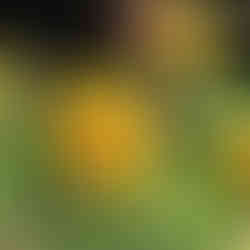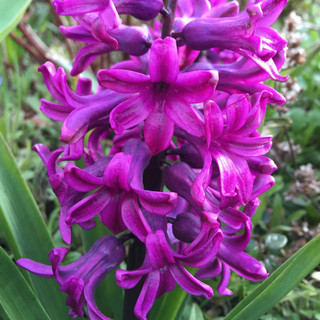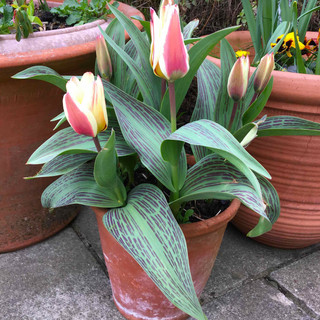
It has been a challenging start to the year weather wise but with the arrival of Easter our thoughts turn to garden developments.
Over the space of the next month we will see the most striking change in the garden within the space of a few weeks. Sprays of green foliage will finally fulfil their destiny; the ducklings will become swans.
The garden is a wash of Narcissus and Hyacinthus bringing a welcomed splash of colour.
Hyacinths also provide an exquisite heady scent. My preferred cultivars are 'Woodstock' for its rich magenta, 'Pink Pearl' and 'Purple Sensation.' All hold an impressive presence in the Spring border.
Mulch to suppress weeds and retain water. Try well-rotted horse manure, shredded wood/bark, damp newspaper, straw, or grass clippings.
Many plant's blooms appear delayed or their flourish prolonged due to the snow and general freezing start to the year so wait until they have given you all their flowers and have properly ‘gone over’ before pruning. Even if you have traditionally pruned some plants now in previous years be guided by what your plants are doing this year.
Fruit trees on the other hand finally break dormancy.

Plants to prune now or AFTER flowering: Leycesteria (Himalaya honeysuckle), Ligustrum (privet), Perovskia, Phlomis, Hypericum, Passiflora (passion flower), Solanum (potato vine), Aucuba japonica (spotted laurel), Ceanothus (evergreen), Cistrus (rock rose), Cotoneaster (evergreen), Erica carnea (winter heather), Hebe, deadhead Hydrangea (mop-head), winter flowering Lonicera, Potentilla, Photinia, Fatsia japonica, Forsythia, Weigela.
Finally the month to prune Penstemon and Salvia microphylla ‘Hot Lips.’
Clear away the very last old seedhead & stems of the previous year’s herbaceous perennials & grasses.
Watch out for frosts. Keep tender plants indoors.
Top-dress containers. Scrape off 5-10cm of old soil from top of pot, replace with fresh compost; feed.
Plant summer bulbs such as Gladiolus, Crocosmia, Oriental Lilies and Begonias.

Feed plants. Everything is springing into life, using lots of energy, requiring a food boost for new shoots. A general balanced feed will cover all bases. High nitrogen will promote new shoot development.
Fish, blood & bone is a good organic slow release fertiliser.
Bonemeal boosts roots when planting new shrubs. Coat roots of new plant in Mycorrhizal fungi to immensely increase plant’s potential for taking up water and nutrients.
Give acid loving plants, (azaleas, rhododendrons, camellias, blueberries) a boost with ericaceous feed.
Feed flowering plants with high potash fertiliser to prolong flowering period.
Increase watering houseplants. Feed when new growth appears. Re-pot or top dress with new compost.

Succulents make fantastic container displays. Sempervivum, houseleeks have become incredibly popular. They are highly ornate and require minimal attention so a good option for busy people. Experiment with your pots or build an alpine rockery. Household bricks also make ideal creative containers.
Lift, divide, replant over crowded bulb clumps to increase your stock i.e. snowdrops.
Lift and divide herbaceous perennials.
Tie in climbing and rambling roses and clematis.
Deadhead daffodils; leave leaves to die back naturally for about six weeks so the energy returns to bulb to create next year's flower.

Deadhead, cut back and feed spring containers and bedding displays.
Set out fruit bushes, canes and runners i.e. strawberries, raspberries.
Rhubarb rhubarb rhubarb harvest now! Super sweet pale stalks of forced or the dark pink skin of traditionally raised; all taste great in crumbles or flapjacks.
Sow indoors annual flower seed: sunflowers, nasturtiums, marigolds. zinnia, cosmos, nicotiana, great to get small succession sows of herbs on the windowsill too.
Sow outdoors hardy annuals: calendula, wild flower seed, poppies, cornflowers, nigella, lupins, sweet peas, larkspur.
Sow veg seeds under glass: courgette, pumpkin, cucumbers, kale, tomatoes, lettuce, & herbs.

Direct sow veg outdoors: beetroot, broad beans, carrots, peas, spring onion, parsnips, potatoes.

Plant dahlia tubers in pots but keep indoors until frost risk passes.
Repair lawn bare patches with seed. Feed your lawn for wonderful green results.
Look out for slugs and snails on new shoots! Either pick off, use beer traps, copper rings, shingle/egg shells, wool pellets or nematodes ‘Nemaslug’. If using slug pellets try to use organic ferric phosphate (child & pet friendly) I personally use Sluggo Slug & Snail Killer by Neudorff; can be used on edible crops also resistant to rain. Avoid metaldehyde-based products.

Check pots for over wintered vine weevil. They will be reaching their most destructive larvae stage now; eating plant roots. Organic treatment: try introducing Nematodes. Nemasys is safe for the environment, children, pets and very importantly, safe for other wildlife.

Ponds: clear excess blanket and duck weed; leave waste on pond side so wildlife can crawl out safely. Pop in a barley straw bale to keep water clear and reduce weed regrowth.
Annual weeds. Gently hoe / agitate soil surface or pull shallow roots. Be careful to avoid new seedlings and existing plants. Deep digging will bring dormant seeds to the surface and actually create more weeds so try and keep soil disturbance to a minimum. Regular weeding will prevent weeds going to seed and reduce spread. Look out for annuals such as annual meadow grass, annual nettles, hairy bittercress, groundsel, chickweed, speedwell, cleavers, fat hen, shepherd’s purse, and creeping oxalis & buttercup.
Tackle perennial weeds such as ground elder & bindweed. They really take off this month. Avoid chemicals if possible; if you cannot avoid them then treat specific area, wrap in a plastic bag to contain it whilst still attached to parent plant so systematic weedkiller can work its way to the roots; otherwise dig out as much as possible, try to untwine from border plant roots. Virtually impossible to dig out completely as even an inch of root left in ground re-grows but new plants will have weaker/unestablished new roots so easier to remove and over time the problem can be managed and maintained. Digging out needs to be regularly repeated.
Remove tap rooted weeds with a specific taproot tool to avoid disturbing soil and plants around the weed. Try to remove entire taproot or it will re-grow. An alternative to glyphosate is pelargonic acid (naturally occurring in geranium leaves) used in Richard Jackson’s double action weedkiller.
Put weeds to good use – make homemade nettle compost tea! High in nitrogen. Great for new shoots.
Tulips will erupt into bloom this month. They are one of my favourite flowers due to their diverse colour and form. You need to plant them from November - January for a good display now but the rewards are worth the wait.
Gardens are delicately balanced ecosystems so try not to totally eradicate pests as they will be a food source for other creatures i.e. birds/frogs love slugs & snails! Everything co-existing, with no dominant species, will equal a healthy garden!
All photos taken by Debi Holland ©


































































